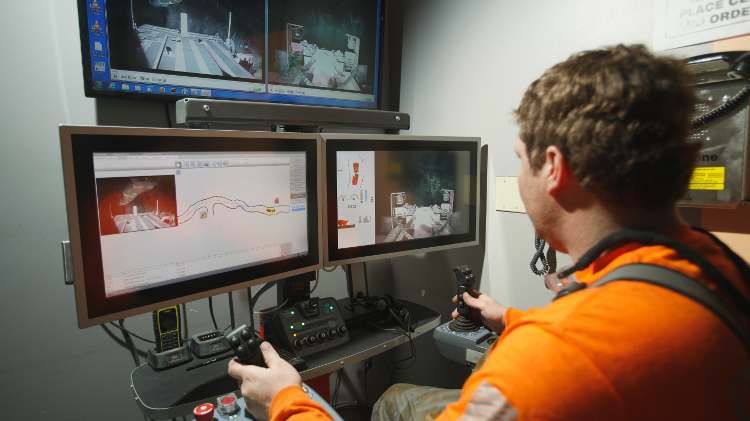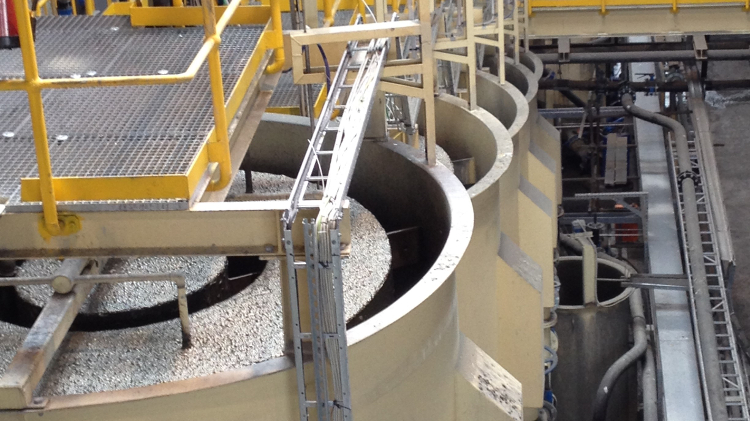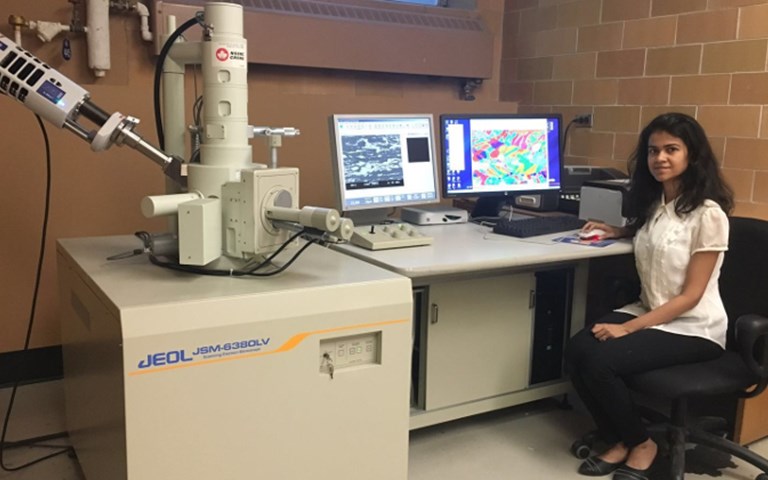Ryerson University PhD candidate Nabila Tahreen (above) has been studying how the inclusion of various quantities of yttrium affects the texture of a wrought magnesium alloy after annealing. Courtesy of Nabila Tahreen
Some 50 years after it gained popularity among sports car enthusiasts as the original material for die-cast wheels, magnesium may be set to experience an automotive renaissance. At the 2015 Conference of Metallurgists (COM 2015) in Toronto, Ryerson University PhD candidate Nabila Tahreen detailed some of the ground-breaking and potentially industry-changing materials research she and her supervisor Dr. Daolun Chen have been undertaking, in collaboration with the University of Alberta in Edmonton, and Chongqing University, Southwest University, Chongqing Academy of Science and Technology in Chongqing, China. Her paper, “Effect of Yttrium Addition on Texture Evolution During Pre and Post-Deformation Annealing in an Extruded ZM31 Alloy,” is just the most recent entry by Tahreen in a growing body of work investigating the properties of magnesium alloyed with rare earth elements. Her work has implications for both the automotive and aerospace industries, where proponents suggest it could replace steel and aluminum in many applications.
Why magnesium? “It is the lightest metallic structural material available so far,” explained Tahreen – 30 per cent lighter, by volume, than aluminum. “If it can be used properly, we can save a lot of weight.” At a time when aluminum is just beginning to find traction in the automotive industry, stringent incoming fuel economy and emissions regulations are pushing researchers in industry and academia to start looking beyond that long-time aerospace staple for an even lighter option.
But magnesium – pure or alloyed – has significant shortcomings that minimize widespread use of the material. For one thing, it is not as strong as its competitors, especially in higher-temperature applications like engines. It also has strongly anisotropic mechanical properties – that is, its strength, hardness and durability vary depending on the orientation of the material or part. It has poor corrosion resistance. And most importantly for industry, magnesium suffers from poor room temperature ductility and formability. If you try to roll it, extrude it, or otherwise deform it to create usable parts, it can easily crack.
Grains of truth
Problems with intrinsic material properties, like strength, hardness and ductility, always come back to the crystallographic make-up of the metal. The size, shape, orientation and elemental composition of microscopic crystallites, or grains, affect the macroscopic material properties.
Alloying can help by changing and differentiating the composition of individual grains (or phases). Rare earth elements, including yttrium, are particularly useful in magnesium, according to Tahreen, because they cause texture randomization – they make the grain pattern more isotropic. Metals that have randomly distributed and oriented grains tend to have similar properties in each direction (they are isotropic). Metals with non-random (preferred) grain orientations and distributions are generally anisotropic – like magnesium. These non-random crystallographic structures are said to have “texture.” The atoms of yttrium, which are significantly larger than magnesium atoms, help by creating phases with different crystal structures than magnesium forms alone.
“Rare earth elements can solve the problems to a great extent,” she said. “The limited room temperature formability of magnesium can be improved with rare earths, and high-temperature strength is also really good after adding rare earths. They also improve the creep resistance, refine the grain size and weaken the texture, which helps to solve the anisotropy-related problems.”
Lab notes
Magnesium alloys, like most metals, can be strengthened by cold working, or compressing them at temperatures well below their melting point. But that increases the texture and anisotropy of the material and increases brittleness. A common solution is to follow cold working with annealing, or heating the metal to a high-enough temperature to allow grain recrystallization, finding a balance between strength and ductility.
Tahreen’s COM 2015 paper studied how the inclusion of various quantities of yttrium affected the texture of a wrought magnesium alloy (ZM31) after annealing. The unaltered ZM31 alloy contains three per cent zinc (by weight) and one per cent manganese in magnesium. Tahreen examined the unaltered alloy as well as altered samples with 3.2 per cent and six per cent yttrium by weight. In short, the more yttrium that was included, the greater the effect annealing had on reducing the texture.
Getting technical, Tahreen explained, “Adding yttrium promotes non-basal slip and decreases the reliance of magnesium on twinning, and thereby increases the ductility of magnesium at lower temperatures.
“One of the phases, the long period stacking order (LPSO) phase [which appeared in the six per cent yttrium version of ZM31 tested] has been regarded as the greatest strengthening phase in magnesium alloys to date,” she added. “This is the only yttrium-containing phase which has been found in the past to not only give good strength, but also improve the ductility of the alloy. This phase also has unique characteristics like uncommon stability: even at high temperature, it retains good strength.”
Tahreen’s experiments with yttrium are an important step in developing usable magnesium alloys. By characterizing the properties of each composition after cold working and annealing, Tahreen’s research will help engineers select the correct alloy composition and manufacturing process, depending on the properties they desire for their particular applications. Major areas of research that remain are characterizing the fatigue properties of these alloys, and improving their corrosion resistance. Both will be vital to understanding how magnesium-yttrium parts will age over time.
Directed studies
One person paying attention to Chen and Tahreen’s research is Tim Skszek, the senior manager for government partnerships at Magna International, a major automotive parts supplier. In his role coordinating government funding for universities, including the programs that fund Chen and Tahreen’s work, like AUTO21 and NSERC Strategic Partnership Grants led by Dr. Dongyang Li of the University of Alberta, he helps researchers focus on the needs of the auto industry. “I make sure their work is relevant,” said Skszek. “The funding agencies typically require endorsement from industry to say ‘This is valid; this is potentially of value.’” With industry identifying the knowledge and capability gaps and setting functional targets for materials to perform to, he explained, researchers in academia can assess those gaps and identify ways to address them.
At the moment, magnesium enjoys only a limited number of uses as a primary material. Cell phones and laptops often have magnesium frames, and car steering wheels and door inner panels are commonly made from the metal, said Skszek. Some aerospace components are made from cast magnesium, too. But better low-temperature ductility would allow easier and cheaper processing, putting magnesium on more level footing with alternatives like aluminum. The same tooling, dies and lubricants used with aluminum could be used for magnesium, and process time and energy input per part would be reduced compared to current higher-temperature processes. The real prize is to develop a wrought magnesium alloy with good low-temperature formability, which would have higher strength than cast parts and therefore more potential applications.
The uphill road to commercialization
Once the material properties are fully characterized, though, it is still a long road to widespread commercial use. “Today, a wrought sheet of magnesium is US$15 per pound, while aluminum is just US$2.50 per pound,” said Skszek. Yttrium, less expensive than other rare earths, also sells at around US$15 per pound, according to Tahreen. “But if you look at the processing cost and the energy and the materials to manufacture magnesium and aluminum,” Skszek noted, “they’re very similar. So it has the capability to be equal or lower in price,” if the cost of the raw material comes down with greater economies of scale.
Beyond the commodity price, global magnesium availability will need to become more stable. Currently, some 85 per cent of the metal is produced in China, according to Skszek. Additional sources would give potential users greater purchasing flexibility and greater confidence in the availability of the material.
Rolling capacity is currently deficient too. Skszek sees magnesium being widely used first in sheet form, for bolt-on components like car hoods and roofs and deck lids, all of which are “Class A” parts requiring smooth, painted, cosmetic surfaces. “It’s feasible, it’s been demonstrated, there’s no issue there,” he explained. “We just need greater capacity to manufacture Class A wrought sheet.”
If the yttrium-magnesium alloys do prove capable, it will be the culmination of years of research by many individuals. For Tahreen, though, this research has even greater personal implications: she is set to defend her PhD thesis on magnesium alloys in August. Afterwards, she hopes to continue developing new materials in industry – perhaps still pushing the capabilities of magnesium until it achieves common use. “I will feel very good once I see that this material is really in use,” she said. “On that day I will feel that my hard work has paid off.”




